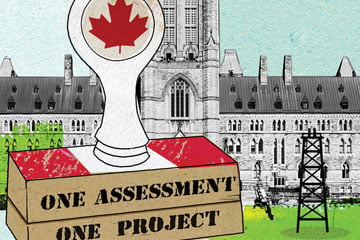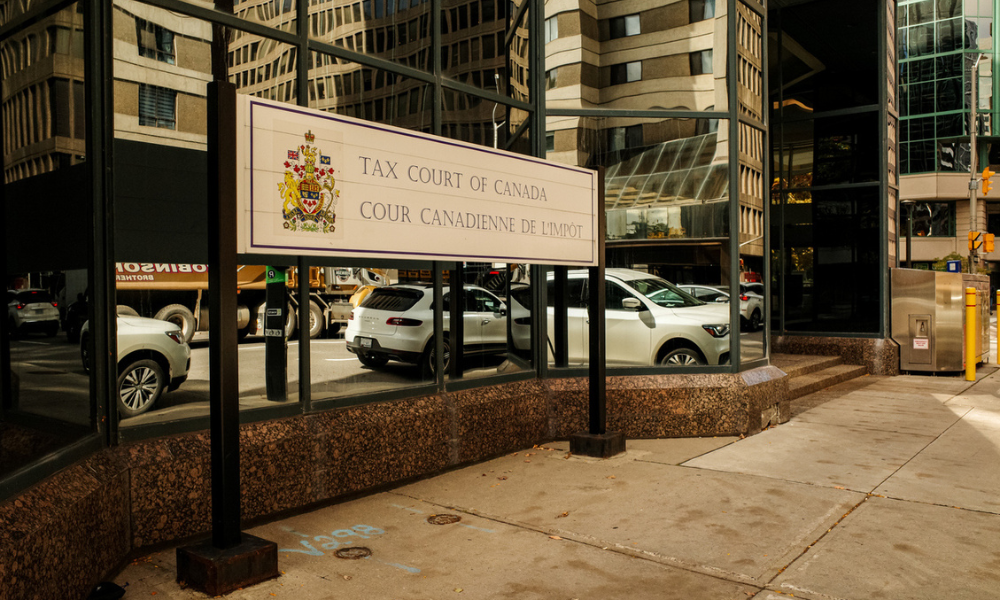Ottawa’s new environmental regime is causing consternation from critics on all sides.

Ottawa’s new environmental regime is causing consternation from critics on all sides.
When the federal government introduced legislation in February to rename and restructure the National Energy Board and create a new agency in charge of environmental assessments, it was not short on upbeat slogans to describe the changes.
“Cleaner environment, stronger economy” was the description in a government backgrounder about Bill C-69 when it was unveiled. “One project, one assessment” was another.
The initial response to the changes, however — whether from Indigenous groups, the energy sector or environmental organizations — has not been nearly as positive about the new framework that is being proposed.
“Disappointing everybody is not consensus building,” says Sara Mainville, a partner at Olthuis Kleer Townshend LLP and a former chief of the Couchiching First Nation in northwestern Ontario. “As a government, it is trying to do too much. This leads to bad laws. It should instead have focused on a few key principles,” she says.
Sarah Powell of Davies Ward Phillips & Vineberg LLP in Toronto says there needs to be more clarity about what companies behind major energy projects will need to do in the future to receive government approval. “Proponents are not looking for an easy ride but a clear ride. On first blush, there is nothing here that will encourage investment in Canada,” says Powell, a partner in the firm’s environmental, Indigenous and energy practice.
The federal government’s legislation creates the Impact Assessment Agency of Canada as the body responsible for assessments of major energy projects. It will work in co-operation with regulators such as the National Energy Board (to be renamed the Canadian Energy Regulator) and affected parties in this process.
Among the stated principles of the bill are to “foster sustainability,” ensure meaningful public participation, promote “communication and co-operation” with Indigenous peoples and for the process to be conducted in a timely manner.
The reviews will be known as impact assessments, rather than environmental assessments, because they are to consider a broader range of factors including the health, social and economic impacts of a project. For assessments conducted by the agency, a final report must be issued within 300 days after it begins. Those that are deemed to require a review panel have 600 days to issue a report.
Among the most significant changes from the existing framework are a new “public interest” test, greater government involvement in the early planning phase of proposed projects and a potentially significant role for regulators in certain types of review panel assessments.
“The public interest test is broader and more nuanced,” says Powell, compared to the previous analysis of whether a project would result in a significant adverse environmental effect, as set out in legislation enacted in 2012 by the former Conservative government. “You will have to be more robust on how it meets that test,” explains Powell about the proponents of projects designated for these reviews.
The new test states that the factors to be considered are the extent to which a project contributes to sustainability, adverse effects, mitigation matters than can be implemented, the impact on any indigenous group and how it hinders or assists the government of Canada’s environmental treaty obligations.
Martin Ignasiak, a partner at Osler Hoskin & Harcourt LLP in Calgary, suggests that, in one respect, the proposed legislation is formalizing what has already been taking place in the assessment process. “This is something we have seen over the last several years,” says Ignasiak, national co-chairman of the firm’s regulatory, environmental, aboriginal and land group.
However, he says he has concerns about the scope of this test and whether in some cases it will even be possible for applicants to meet the legal bar. “Our clients have no issue with addressing aboriginal or community concerns that have a connection to the project. When I look at the proposed legislation, though, it includes social issues to be addressed that may be beyond the ability of the proponent to mitigate,” he says.
From the perspective of environmental organizations, there is also a mixed reaction to the legislation. The broader factors that must be considered in an assessment is a step in the right direction, suggests Stephen Hazell, director of conservation and general counsel for Nature Canada.
“What the environmental community has been asking for is to go beyond the adverse effect test,” says Hazell, who is also a former director of legislative and regulatory affairs at the Canadian Environmental Assessment Agency. “Communities are concerned about the impact from a long-term perspective. You are starting down that path with the public interest test,” he says.
The legislation also requires the minister or the cabinet (depending on whether the assessment is conducted by the agency or a review panel) to provide reasons for the government’s ultimate decision on a project.
In addition to providing the grounds for a judicial review, the need to provide reasons should reduce the possibility that a decision has been made “for purely political reasons,” says Hazell. “This should encourage governments to play it straight.”
Joshua Ginsberg, director of the Ecojustice environmental law clinic at the University of Ottawa, says the obligation to provide reasons is a positive step. However, he believes there is a lack of clarity in the language in key parts of the legislation, such as the requirement for a “consideration” of the various factors in the public interest test.
“The standard of consideration needs to be clarified. It should not be just ‘some consideration’ but a clear threshold,” says Ginsberg. More explanation would be of assistance to all parties, he says, including proponents. “In fairness to them, they don’t know the bar.”
Another aspect of Bill C-69 that is concerning to groups such as Ecojustice is there could be a greater role for some regulators in the impact assessment of major offshore energy projects.
Ecojustice is leading a coalition of environmental groups in a court challenge against the Canada-Newfoundland and Labrador Offshore Petroleum Board, which granted an extension of an exploration licence in the Gulf of St. Lawrence, near the Magdalen Islands. The area, known as the Old Harry Prospect, is home to four thousand species of marine life and is on a channel that is a migratory path for whales, salmon and cod.
In the future, in cases where a review panel is ordered for an offshore project such as this, the proposed legislation states that “at least” two of the five members have to come from the regulator.
“They have expertise. But this would give them a new role in the assessment process, which is a problem. Their mandate is to promote exploration,” says Ginsberg, suggesting this creates a conflict of interest.
Before the legislation was drafted, the federal government appointed an expert panel to engage in consultations and make recommendations. The report was issued last spring and Mainville says it is disappointing that the federal government is not adopting more of its suggestions.
“We had a very good expert panel report. First Nations really engaged with the panel. What it wanted was more robust sustainability measures,” says Mainville.
In terms of the public interest test, sustainability should not be just one of the factors but there should be a requirement for a net contribution to sustainability, she says. As well, Mainville believes too much discretion is ultimately left with the federal government in the assessment process.
“First Nations are disappointed. We expected co-decision-making,” says Mainville, in explaining that the assessment framework should be similar to a treaty relationship. “It is about working together. It is not about having a veto. A veto has no place in a treaty relationship. The goal is not to end up in court every time.”
Aspects of the proposed changes that are still to be decided include the regulations for “designated projects” that will be subject to assessment and the criteria that will permit the government agency to temporarily suspend the time deadlines for a report to be completed.
One part of the legislation that seems to be receiving praise from all sides is the commitment to more government involvement at an early stage. The mandatory early planning process is designed to address potential issues with proposed projects and engage with affected communities and Indigenous groups. The federal government has committed $1 billion over the next five years to the overall implementation of the legislative changes.
In the past, there have not been significant government resources committed to the early planning stage, notes Powell. “We haven’t seen the Crown willing to do that. The challenge now with the new agency is will it step in and make sure the early planning is adequate? They will need expertise and resources. None of it will matter if you don’t have boots on the ground,” Powell says.
Ginsberg has a similar view about the proposed early planning measures. “Early engagement is a good development if it is properly funded,” he says.
As the bill moves through the legislative process, all parties say they are hopeful that amendments along the way and the regulations that are drafted will help address their concerns.
“We appreciate the federal government proceeding with it,” says Ginsberg. “We want them to get it right.”









